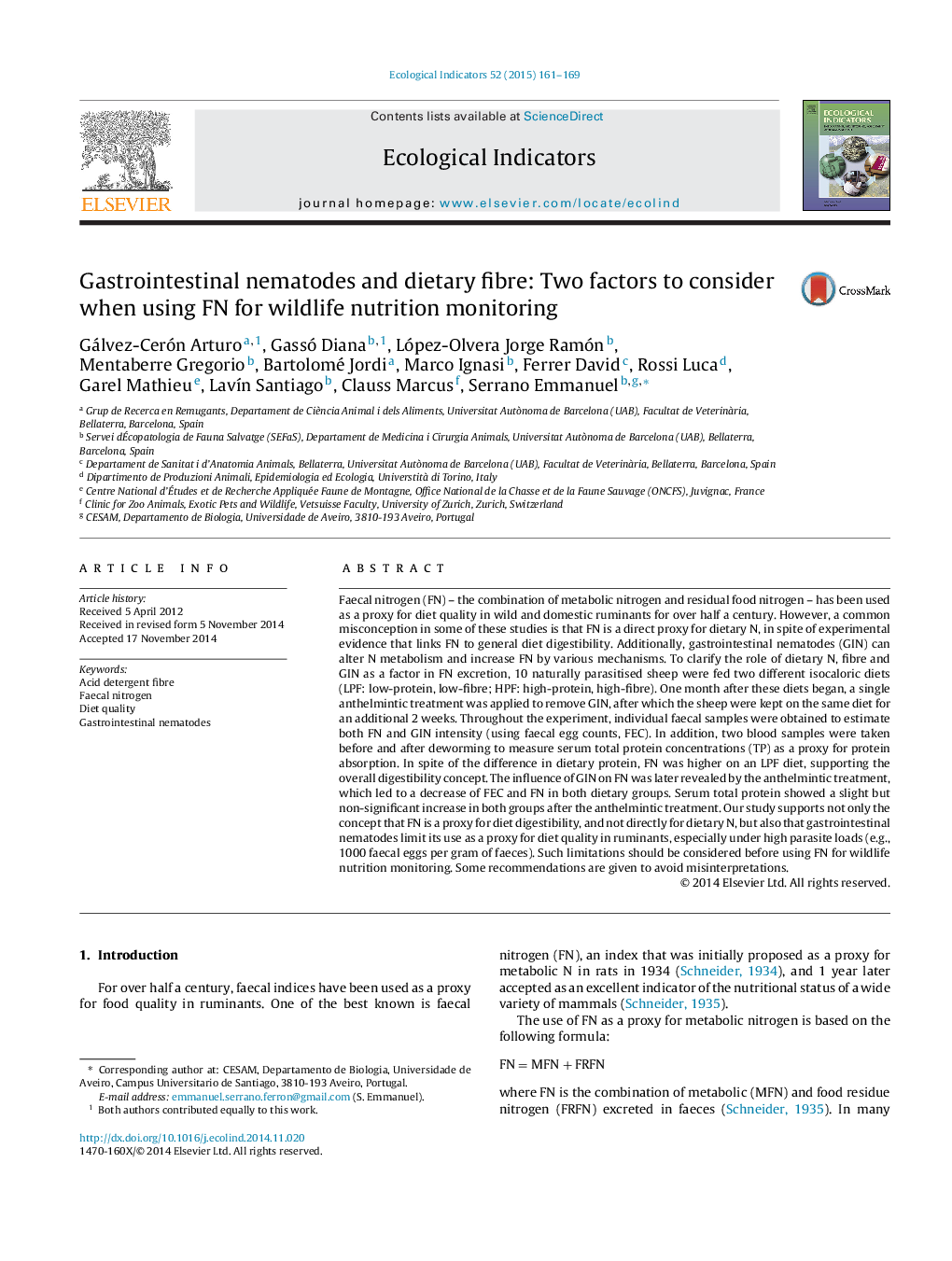| کد مقاله | کد نشریه | سال انتشار | مقاله انگلیسی | نسخه تمام متن |
|---|---|---|---|---|
| 6294521 | 1617149 | 2015 | 9 صفحه PDF | دانلود رایگان |
عنوان انگلیسی مقاله ISI
Gastrointestinal nematodes and dietary fibre: Two factors to consider when using FN for wildlife nutrition monitoring
دانلود مقاله + سفارش ترجمه
دانلود مقاله ISI انگلیسی
رایگان برای ایرانیان
کلمات کلیدی
موضوعات مرتبط
علوم زیستی و بیوفناوری
علوم کشاورزی و بیولوژیک
بوم شناسی، تکامل، رفتار و سامانه شناسی
پیش نمایش صفحه اول مقاله

چکیده انگلیسی
Faecal nitrogen (FN) - the combination of metabolic nitrogen and residual food nitrogen - has been used as a proxy for diet quality in wild and domestic ruminants for over half a century. However, a common misconception in some of these studies is that FN is a direct proxy for dietary N, in spite of experimental evidence that links FN to general diet digestibility. Additionally, gastrointestinal nematodes (GIN) can alter N metabolism and increase FN by various mechanisms. To clarify the role of dietary N, fibre and GIN as a factor in FN excretion, 10 naturally parasitised sheep were fed two different isocaloric diets (LPF: low-protein, low-fibre; HPF: high-protein, high-fibre). One month after these diets began, a single anthelmintic treatment was applied to remove GIN, after which the sheep were kept on the same diet for an additional 2 weeks. Throughout the experiment, individual faecal samples were obtained to estimate both FN and GIN intensity (using faecal egg counts, FEC). In addition, two blood samples were taken before and after deworming to measure serum total protein concentrations (TP) as a proxy for protein absorption. In spite of the difference in dietary protein, FN was higher on an LPF diet, supporting the overall digestibility concept. The influence of GIN on FN was later revealed by the anthelmintic treatment, which led to a decrease of FEC and FN in both dietary groups. Serum total protein showed a slight but non-significant increase in both groups after the anthelmintic treatment. Our study supports not only the concept that FN is a proxy for diet digestibility, and not directly for dietary N, but also that gastrointestinal nematodes limit its use as a proxy for diet quality in ruminants, especially under high parasite loads (e.g., 1000 faecal eggs per gram of faeces). Such limitations should be considered before using FN for wildlife nutrition monitoring. Some recommendations are given to avoid misinterpretations.
ناشر
Database: Elsevier - ScienceDirect (ساینس دایرکت)
Journal: Ecological Indicators - Volume 52, May 2015, Pages 161-169
Journal: Ecological Indicators - Volume 52, May 2015, Pages 161-169
نویسندگان
Gálvez-Cerón Arturo, Gassó Diana, López-Olvera Jorge Ramón, Mentaberre Gregorio, Bartolomé Jordi, Marco Ignasi, Ferrer David, Rossi Luca, Garel Mathieu, LavÃn Santiago, Clauss Marcus, Serrano Emmanuel,